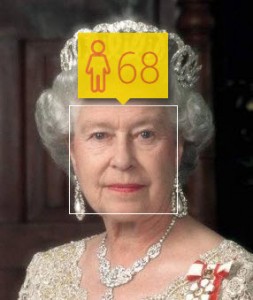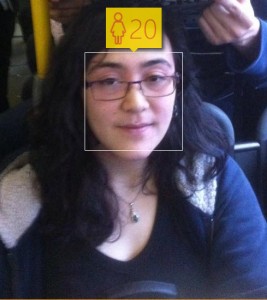By Eleanor Hoskins — Posted on May 05, 2015
Last week, how-old.net went viral on Twitter. This website allows anyone to temporarily upload a photo and have a face detection application guess their age and gender, often with comically inaccurate results. The technology is hosted on Microsoft’s Azure cloud computing service and uses a Project Oxford API (application programming interface) to analyze facial traits. The application is a fun way to see what a computer program thinks of your face, and it also raises a few questions on the flip side of educational technology: how can we educate technology itself, and what does this show us about human thinking and learning?
Computer scientists have been working for years on refining machine learning: the concept of having a computer complete a task or perform a function without being explicitly programmed. It’s a segment of artificial intelligence theory that explores how to build and study algorithms that can make predictions on data, allowing the programs to be much more flexible and adaptable. Machine learning programs are already crucial in a wide range of everyday applications, including spam filtering, voice control, search engines and text recognition.
The world of machine learning is obviously quite different from that of a classroom, but the work that goes into it provides some important insights into the behind-the-scenes aspects of human learning. Teaching a computer to recognize a face is a complicated process, which is shown by how expensive machine-learning-based analysis services can quickly become (as shown here: https://azure.microsoft.com/en-us/pricing/calculator/?scenario=data-management).
At this year’s TED conference, Fei-Fei Li, the director of the Stanford Artificial Intelligence Lab, talked about the huge amounts of human time, brainpower and data entry required to teach a machine to analyze an image and describe it in complete English sentences: something even a child’s brain can do almost subconsciously. http://www.ted.com/talks/fei_fei_li_how_we_re_teaching_computers_to_understand_pictures. Teaching a machine to perform basic human tasks is a taller order than you’d think, and it teaches researchers a great deal about how human visual processes work and how humans learn. Having a program guess your age in a photo is a fun and silly way to spend a few minutes, but a pretty amazing amount of teaching and learning has gone into it!
Additional Resources
- How-old.net
- The Microsoft Machine Learning Blog
- A Demo of the Full Capabilities of Project Oxford Facial Analysis
- Fei-Fei Li’s TED Talk

